Dinosaur tracks probably aren’t the first thing that pops into your head when you’re planning a visit to Ireland, but I highly recommend making time in your schedule to check out this amazing site!
Getting There
Location: Valentia Island, Ireland – just off the scenic Ring of Kerry
Transport: I recommend a rental car, but you can also hire a taxi or take a bus.
Dinosaur tracks in Ireland?
Scientists calculate that somewhere around 350-400 million years ago, sea creatures were evolving into land creatures known as “tetrapods”. Fins used for swimming were gradually turning into weight-bearing limbs and air-breathing lungs were developing, allowing creatures to venture out beyond the oceans.
The tracks on Valentia Island off the coast of Kerry in southwest Ireland were discovered by geologists in the 1990’s. The age of the rocks tell us how old the tracks are. Three countries have discovered tetrapod tracks in exposed rock: Australia, Ireland and, most recently, Poland.
Getting to the Site
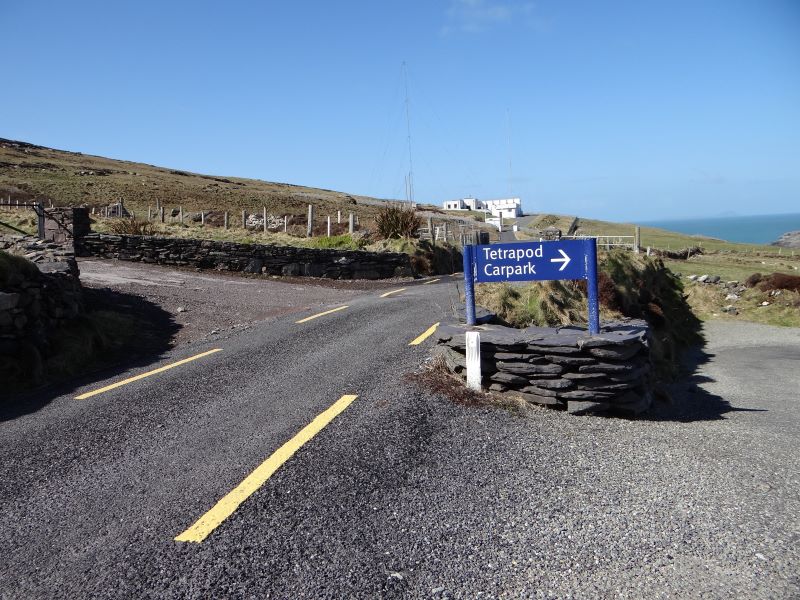
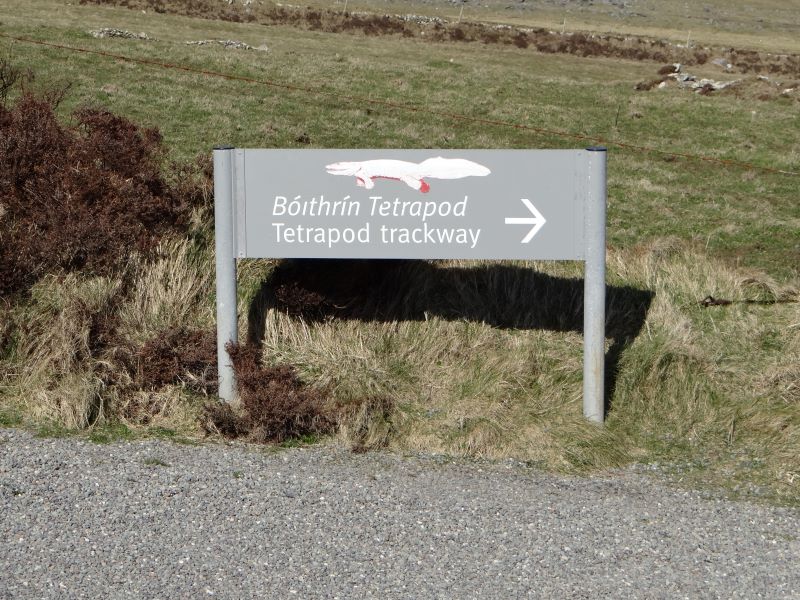
The road to the site is pretty narrow and rural, but there are signs to help direct you. It’s near the Valentia Island Lighthouse, but not on the same road. You can follow signs to the lighthouse for a while, but when you get to the final fork in the road, you want to essentially stay on the road you’re on, don’t turn to the right to go to the lighthouse. You might not realize that was the final fork until you end up at the lighthouse, but just back-track and you’ll find it!
There is a small parking lot available and it’s a short walk to the coast to see the tracks.
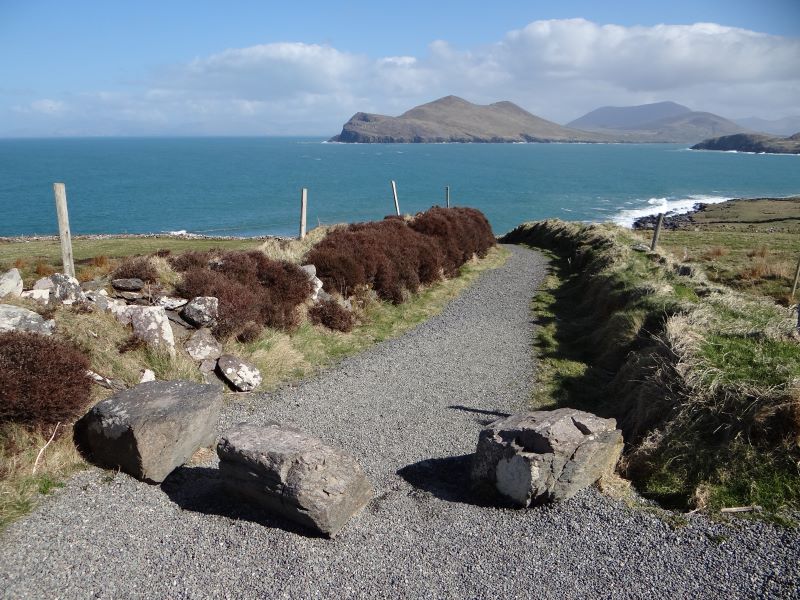
Dinosaur Tracks!
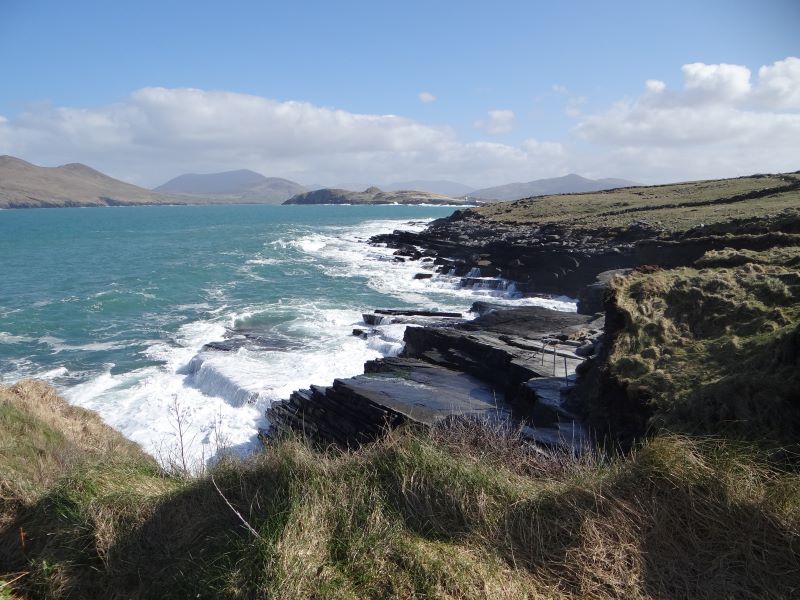
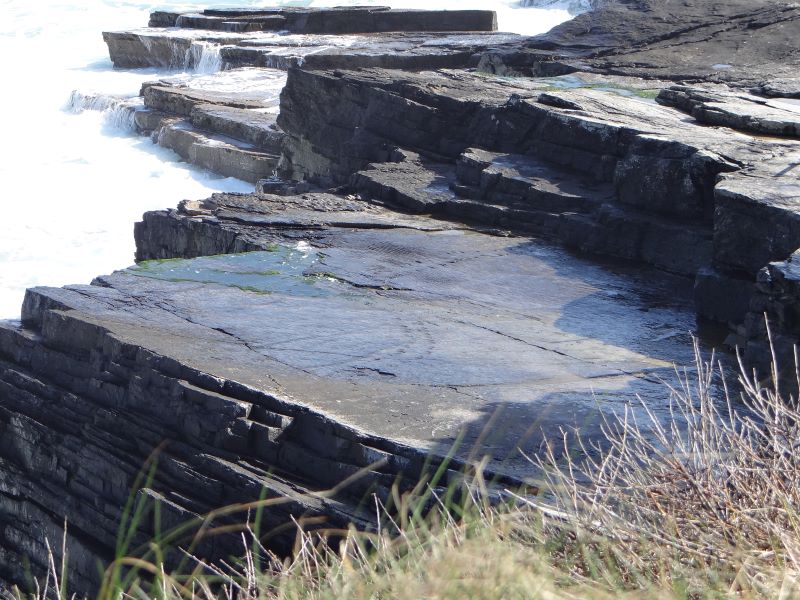
The scenery itself is beautiful, so it’s worth a stop even if you’re not into dinosaurs!
There’s a nice informational panel that shows a sketch of what you will see in the stone to help interpret it.
The footprints are pretty easy to see, but you can also see a section where the creature’s tail would have been dragging behind it as it walked.
In the Devonian period, the section of rock you’ll be standing on was actually near the equator!
It’s only been through millions of years of plates shifting and erosion that the footprints arrived where you’ll see them today.
Depending on the time of day, the water does spray up on the rocks, so be careful when you’re at the site, especially if you have small children with you. It can get slippery.
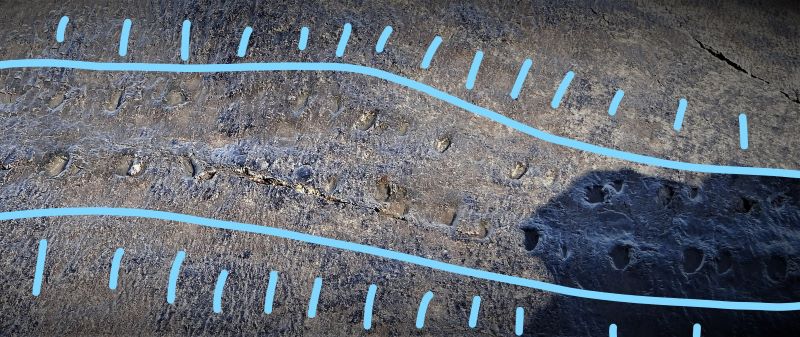
Other Sites on Valentia
The tiny island of Valentia has quite a bit of history packed into it. A fort was built here during Cromwell’s occupation, though it was removed in 1669. It was the Irish terminus of the first trans-atlantic cable in 1858. You can also get to Skellig Michael from here (if you’re lucky enough to have good weather and snag one of the limited daily trips – I never have!)
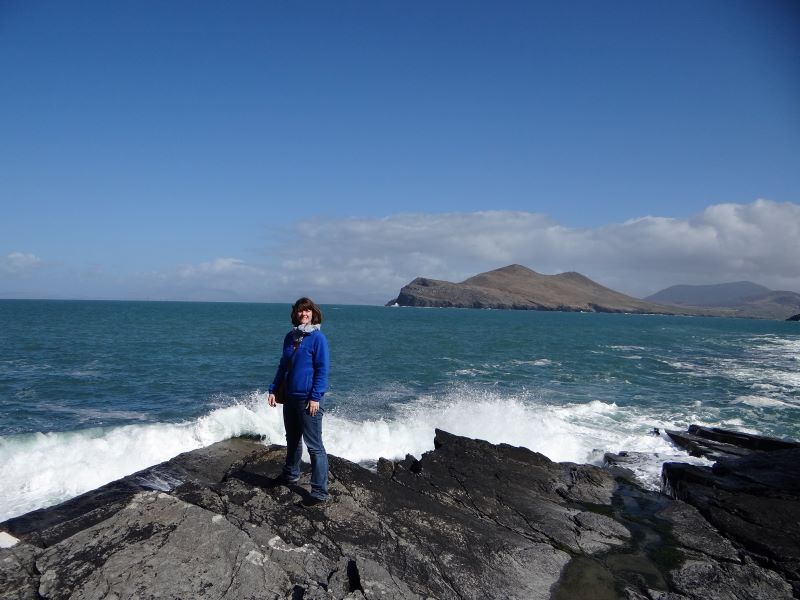
Post Sources:
[bg_collapse view=”link” color=”#4a4949″ icon=”arrow” expand_text=”Show More” collapse_text=”Show Less” ]
“The Rise of the Tetrapods: How Our Early Ancestors Left Water to Walk on Land” by Joshua Rapp Learn. Discover Magazine, 5 April 2021. Accessed 6 August 2021.
“The origin of tetrapods” Berkeley University Understanding Evolution website. Accessed 6 August 2021.
[/bg_collapse]
